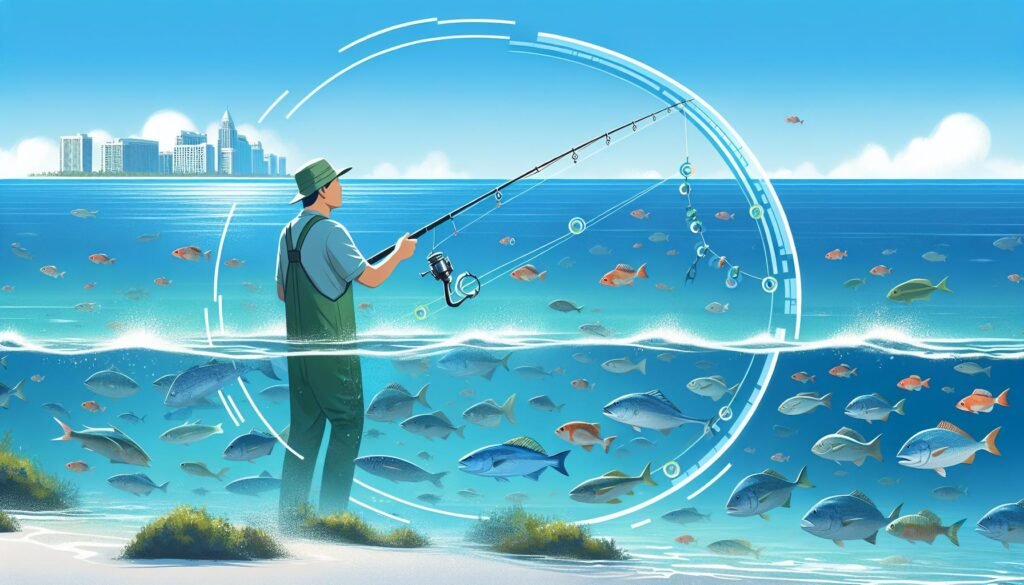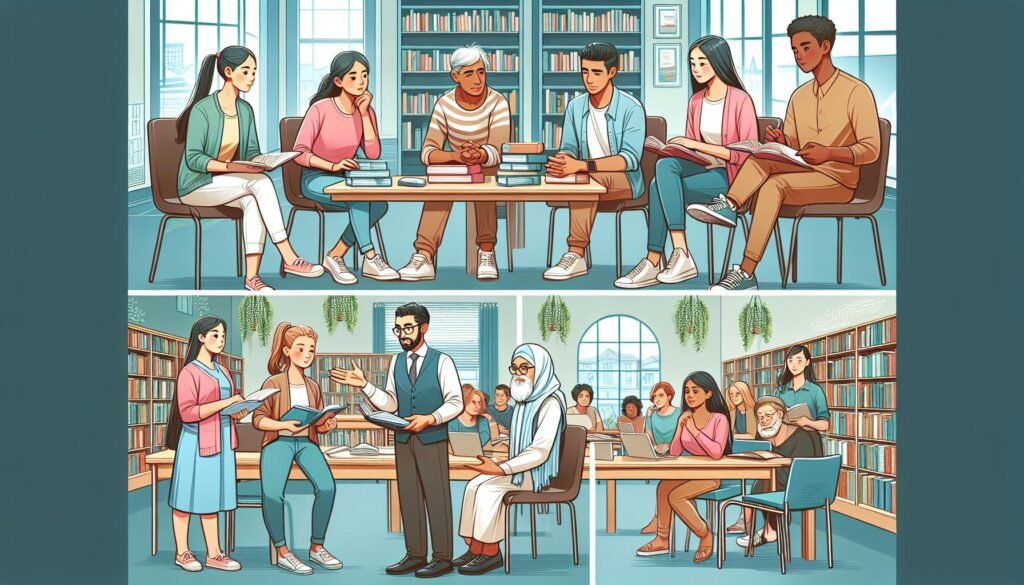Understanding St. Pete Beach Fishing Regulations
Diving into the world of fishing at St. Pete Beach, I quickly realized that familiarizing myself with the local fishing regulations wasn’t just important—it was crucial. The rules might seem daunting at first, but they’re actually pretty straightforward once you get to know them.
The first step is knowing the difference between saltwater and freshwater regulations because they vary significantly. Since St. Pete Beach is a coastal area, we’re mostly talking about saltwater fishing here. Florida requires anglers to have a Fishing License for both saltwater and freshwater if you’re fishing from a boat or the shore. However, there are some exceptions. For instance, if you’re fishing from a pier that’s licensed or if you’re under 16 or over 65, you might not need a license.
Next, it’s essential to understand the Bag Limits, Seasonal Closures, and Size Limits for different species. These regulations help maintain healthy fish populations and ensure there’s fishing enjoyment for years to come. For example, snook has a very specific season and size limit that changes from the Gulf Coast to the Atlantic side of Florida. St. Pete Beach, being on the Gulf side, follows the Gulf Coast regulations. Details on these regulations can easily be found on the Florida Fish and Wildlife Conservation Commission (FWC) website, which I highly recommend bookmarking.
Here’s a quick breakdown of some common species and their regulations:
| Species | Bag Limit | Size Limit | Season |
|---|---|---|---|
| Snook | 1 per harvester | 28-33 inches | Feb-May; Sep-Dec |
| Red Drum | 1 per harvester | 18-27 inches | Open year-round |
| Spotted Seatrout | 3 per harvester | 15-19 inches | Open year-round |
Remember, these are just examples and the regulations can change, so it’s always a good idea to check the FWC site for the most current information.
Also, Responsible Fishing Practices like catch and release, using the right tackle, and respecting area closures not only make for a better fishing experience but also protect marine life and habitats. Plus, engaging in these practices makes you part of a larger community of conservationists, which feels pretty rewarding.
Types of Fishing Permits Required
When planning my fishing trip to St. Pete Beach, I quickly learned that there’s more to it than just casting a line and hoping for the best. One essential piece of the puzzle is understanding the Types of Fishing Permits Required. It’s not just about having a permit; it’s about having the right permit. So, let’s dive into what you need to know.
Saltwater Fishing License
First off, if you’re like me and prefer the thrill of saltwater fishing, you’re in luck. St. Pete Beach offers some of the best spots. But, before you can start, a Saltwater Fishing License is a must. This permit is necessary for anyone who plans to fish in the saltwater regions around St. Pete Beach. There are exceptions, of course. Youths under the age of 16 and Florida residents age 65 and older don’t need this license. Plus, there are specific piers and areas where a license might not be required, thanks to their permit covering anyone fishing from them.
Freshwater Fishing License
For those who lean towards the tranquility of freshwater fishing, a Freshwater Fishing License is what you need. St. Pete Beach might be famous for its saltwater expeditions, but there are hidden freshwater gems waiting to be explored. Similar to its saltwater counterpart, this license comes with its own set of rules and exceptions. Again, kids under 16 and seniors over 65 are exempt.
| License Type | Required For | Exceptions |
|---|---|---|
| Saltwater Fishing | Anyone fishing in saltwater | Youth under 16, Residents over 65, Some piers and areas |
| Freshwater Fishing | Anyone fishing in freshwater | Youth under 16, Residents over 65 |
Purchasing these licenses is straightforward. You can easily get them online, at a licensed agent, or at various tackle shops around St. Pete Beach. Prices vary depending on the type of license and the duration of validity, with options ranging from short-term passes to annual licenses. It’s all about what fits your schedule and plans.
Catch Limits and Size Regulations
When I first ventured into fishing at St. Pete Beach, I quickly learned that knowing the catch limits and size regulations is as crucial as having the right bait. These rules aren’t there to dampen our spirits but to ensure that fishing can be enjoyed by generations to come. It’s all about sustainability and keeping the fish population healthy.
For starters, the catch limits in St. Pete Beach vary significantly depending on the species of fish. Redfish, for instance, have a bag limit that is starkly different from that of Snook or Trout. It’s always a good idea to check the most current regulations before heading out since these limits can change based on ongoing assessments of fish populations. I’ve found that keeping a copy of the regulations or having an app on my phone is incredibly handy.
Size regulations are another critical area. Just like with catch limits, minimum and maximum sizes ensure that juvenile fish have the chance to mature and contribute to the ecosystem before being caught. For example, the minimum size limit for Snook is designed to ensure that they’ve had the chance to spawn at least once. Similarly, there’s often a maximum size limit in place to protect the breeders that can produce a significant number of offspring.
To give you an idea of what you’re looking at, here’s a quick overview of some common species:
| Species | Minimum Size | Maximum Size | Bag Limit (per person) |
|---|---|---|---|
| Snook | 28 inches | 33 inches | 1 |
| Redfish | 18 inches | 27 inches | 2 |
| Trout | 15 inches | 20 inches | 3 |
Remember, these numbers can change, so always double-check the current year’s regulations. Some species, like Tarpon, require a tag, and for others, like certain types of Shark, there are additional restrictions.
Lastly, I can’t stress enough the importance of understanding the catch-and-release techniques for when you catch fish that don’t meet the regulations or when you’ve already hit your limit but still want the joy of fishing. It’s all about respecting the rules and the environment. Knowing how to properly handle and release fish ensures they survive to fight another day, preserving the delicate balance of our marine habitats.
Protected Species and No-Fishing Zones
When I’m out fishing in St. Pete Beach, I always recall that it’s not just about the thrill of the catch but also about being a responsible angler. An integral part of this responsibility involves being mindful of protected species and no-fishing zones. Knowing which areas are off-limits and which fish I should release immediately if caught are crucial to preserving the marine ecosystem.
Firstly, let’s talk about the protected species in these waters. Species like the Goliath Grouper and certain types of sea turtles are not just incredible to encounter but are also protected by law. It’s essential to familiarize oneself with these species to ensure they aren’t inadvertently harmed. If I ever accidentally catch one, I make it a point to carefully release it back into the water, minimizing any stress or injury to the animal.
Moreover, there are designated no-fishing zones within St. Pete Beach that are critical for marine conservation. These areas might be breeding grounds or essential habitats for various marine species. Respecting these zones not only helps in conserving fish populations but also ensures I’m abiding by local regulations. The Florida Fish and Wildlife Conservation Commission (FWC) provides maps and guides that highlight these areas, so I always make sure to check them before planning my fishing trip.
In addition to no-fishing zones, there are also seasonal closures for specific species to be aware of. For instance, Snook, Redfish, and Trout have had temporary catch-and-release only regulations in place to help rebuild their populations. Keeping an eye on the FWC’s announcements and updates ensures I’m not inadvertently breaking any rules.
Here are some key tips I follow to ensure I’m respecting protected species and no-fishing zones:
- Always carry up-to-date regulation guides or have the FWC website bookmarked on my phone.
- Use catch-and-release techniques that minimize harm to the fish, especially when dealing with protected species.
- Stay informed about seasonal closures and no-fishing zones. Planning is key to a responsible and enjoyable fishing experience.
Remember, being informed and cautious about these regulations not only helps in preserving the stunning marine life of St. Pete Beach but also ensures a sustainable fishing practice for future generations. It’s a small price to pay for the abundance and beauty the ocean offers to us, anglers.
Best Practices for Sustainable Fishing
As an avid angler myself, I’ve learned that sustainable fishing isn’t just about following the rules; it’s about embracing a mindset that respects the ocean and its inhabitants. Sustainable fishing ensures that I, and future generations, can continue to enjoy the thrill of catching fish at St. Pete Beach without harming the ecosystem. Here are some practices I’ve adopted to make my fishing trips more eco-friendly.
Firstly, I always make it a point to stay informed. Regulations and protected areas can change, so I frequently check updates from the Florida Fish and Wildlife Conservation Commission. This awareness helps me avoid unintentional harm to vulnerable species or habitats.
I’ve also shifted towards using circle hooks instead of traditional J-hooks. Circle hooks are designed to reduce deep hooking and injury to the fish, making catch-and-release practices significantly safer. Plus, they’re just as effective for securing a catch!
Another practice close to my heart is selective harvesting. This means I’m mindful about which fish I keep and which I release. I follow size and bag limits but also consider the health of the fish population. For example, I might release a large breeding female to sustain the fish stock.
Here are some key statistics on the impact of sustainable practices in recreational fishing:
| Practice | Impact on Fish Survival Rate |
|---|---|
| Circle Hooks | Increases by up to 90% |
| Proper Handling | Increases by 70% |
| Immediate Release | Up to 95% survival rate |
Implementing best handling practices is crucial. When I catch a fish that needs to be released, I handle it as little as possible and use wet hands to reduce stress and damage to the fish’s protective slime coat. If a fish is deeply hooked, I’ll cut the line as close to the hook as possible rather than trying to remove it, which can cause more harm.
Lastly, I’ve come to appreciate the importance of community involvement. Participating in local conservation efforts and sharing knowledge with fellow anglers fosters a collective sense of responsibility towards our shared environment. Whether it’s through organized clean-ups or simply educating a friend on sustainable practices, every action counts.
Conclusion
I’ve shared a lot about the importance of respecting St. Pete Beach’s fishing regulations and the broader call for sustainable fishing practices. It’s clear that our actions today shape the fishing experiences of tomorrow. By staying informed and adopting eco-friendly habits, we’re not just complying with the rules; we’re actively contributing to the health and longevity of our marine ecosystems. Let’s keep these practices in mind, ensuring that we and future generations can continue to enjoy the thrill of fishing at St. Pete Beach. Here’s to casting lines responsibly and reeling in not just fish but a brighter future for our oceans.



